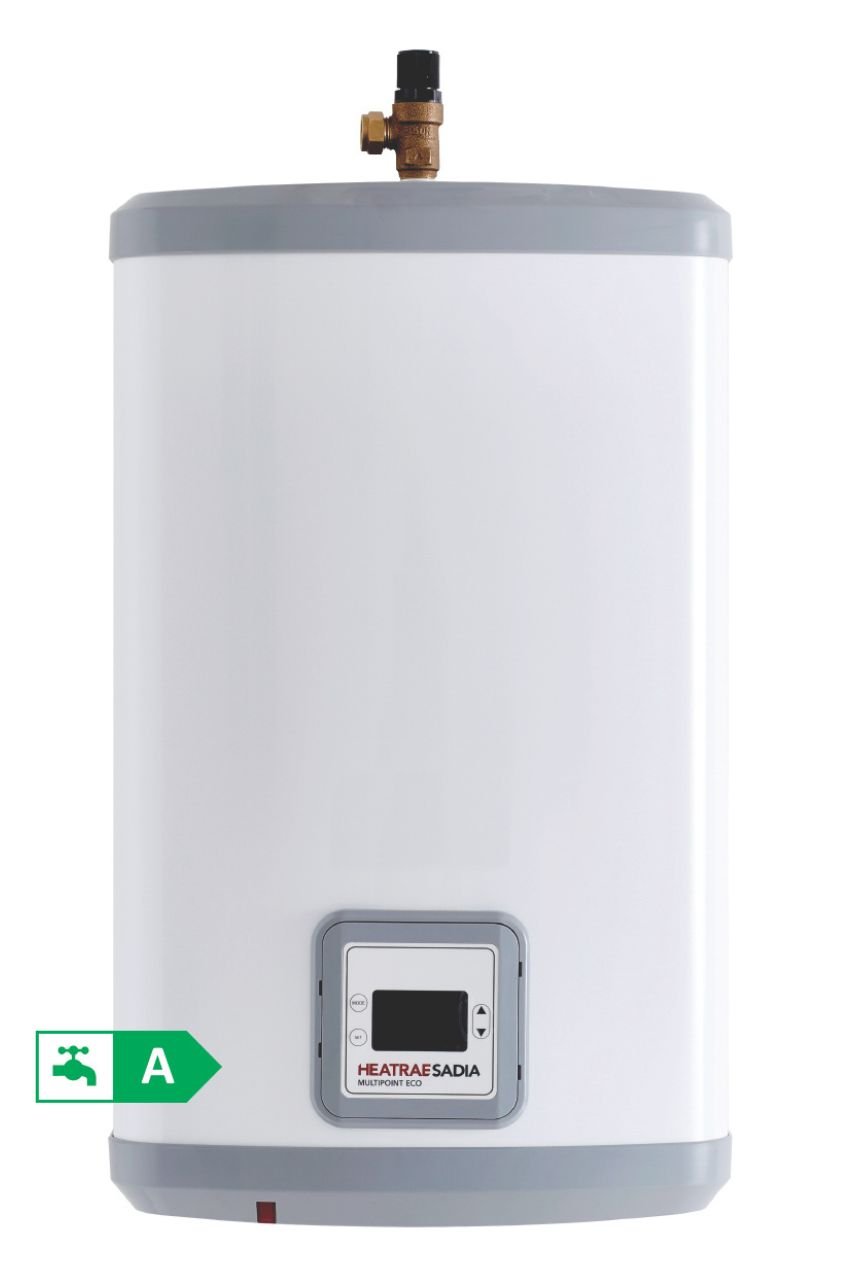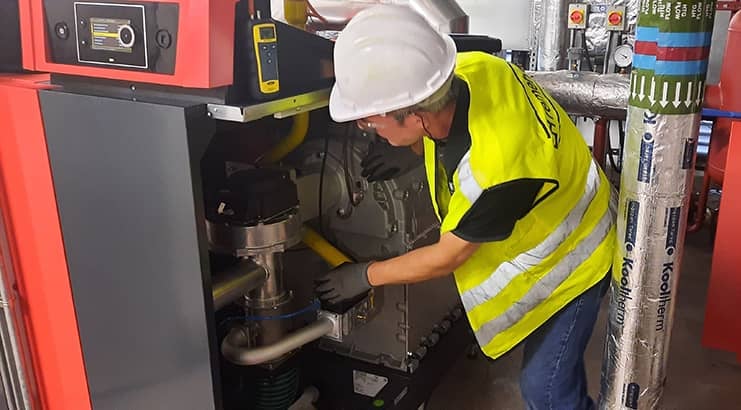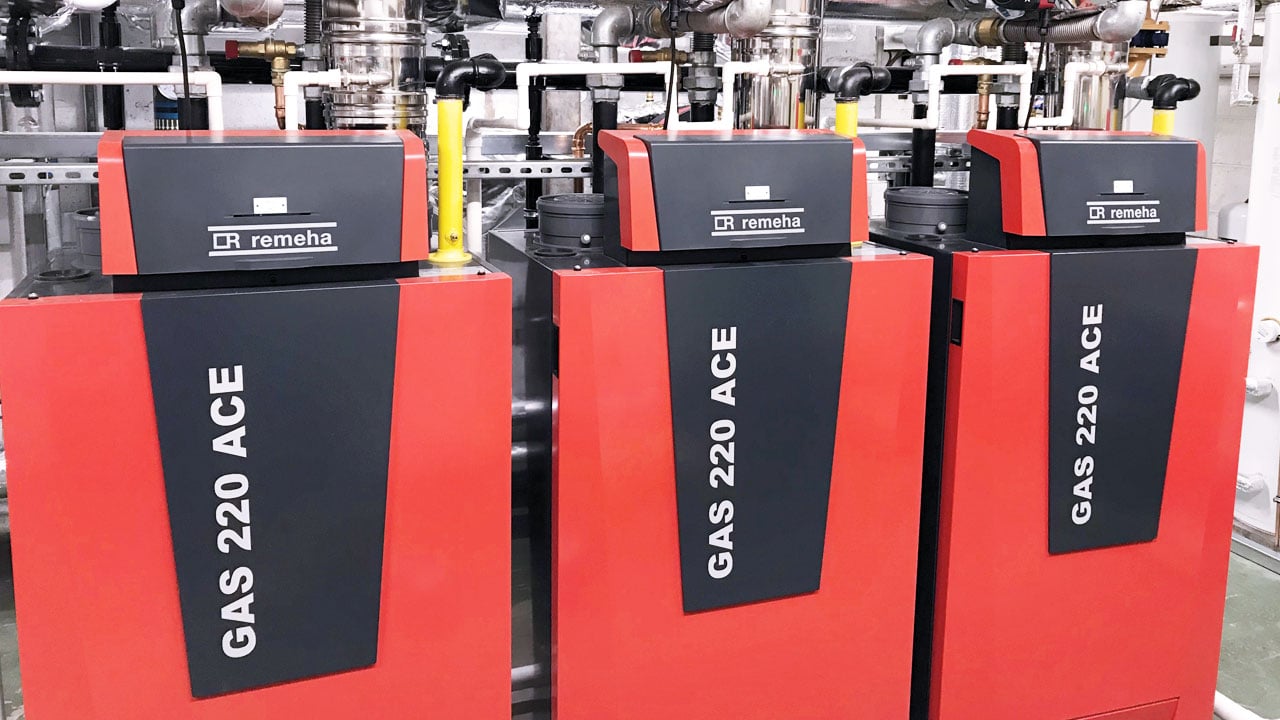
Design strategies for low carbon hot water in the healthcare environment
The NHS has a commitment to become the world’s first net zero national health service.
With NHS estates and facilities playing a critical part in achieving this ambition, Andy Green, Technical Director at Baxi, discusses the options for generating safe, reliable efficient hot water
As part of its commitment to tackling climate change, the NHS has set ambitious targets for reaching net zero from its directly controlled emissions by 2040, and the emissions it can influence by 2045. Achieving low carbon hot water generation is one of the areas identified for achieving this target.
Given the high demand for hot water that is frequently associated with healthcare premises – from comfortable conditions and catering to in-house sterilisation and laundry – this service is a clear priority for efficiency. But it’s one that comes with certain challenges.
First and foremost is the need to prioritise patient safety and wellbeing. Ensuring an adequate, reliable hot water supply is key to the whole operation, creating comfortable conditions for patients and staff, maintaining clinical standards, as well as being essential for treatment purposes.
Related to this is the need to implement measures to prevent the build-up of waterborne pathogens, mostly related to the control of legionella bacteria, in the hot water system. To reduce the risk of legionella, the Health and Safety Executive (HSE) advises that domestic hot water (DHW) should be stored at 60ºC at least and distributed so that it reaches 55ºC at point of use in healthcare premises.
As the risk of patient scalding or burning increases when water temperatures are too high, a further consideration is temperature control which needs to be provided at hot water outlets to protect patient safety.
The vast scale of the NHS estate, the diversity of buildings and differing heating systems add to the complexity of the challenge facing NHS estates and facilities managers. Our focus here is on new build net zero carbon hospital and healthcare buildings and design strategies for the hot water system within them. With that in mind, let’s consider some of the options.

The role of heat pumps
The government has identified heat pumps as one of the favoured technologies to achieve net zero buildings. Certainly, in new hospitals and NHS buildings, heat pumps will play a key role in achieving low carbon heating and hot water.
Using refrigerant technology is an attractive proposition for generating low carbon heat as the potential efficiency of air source heat pumps can be up to 400% in many cases. This means that for every 1kWh of electricity used to run the heat pump, you get up to 4kWh of heat output.
A number of logistical factors will need to be considered at the outset including available space and budget. The electrical capacity of the site will be a further consideration, especially where EV charging points are in place. Your chosen manufacturer should be able to advise on the options as well as the latest technologies and designs.
ASHP design options for DHW
When considering DHW generation and the specific requirements in hygiene-critical healthcare environments, there are a number of ways in which ASHPs can be used.
Mid temperature ASHPs can be used with direct electric water heaters in an all-electric approach to raise the DHW to safe temperatures. As this approach would involve higher volumes of stored DHW, it is therefore important to take into account available space and the weight for the larger cylinders – particularly when dealing with rooftop or non-basement plant rooms. Additional forms of legionella control legionella within the larger volumes of stored water will also need careful monitoring and management.
Another option is high temperature ASHPs which are capable of delivering the high flow temperature required to meet the design temperature for sanitary hot water. The advantage of using high temperature heat pumps is that it avoids the need for an alternative form of technology to store the DHW above legionella temperatures.
This brings greater design flexibility as less space is required, making for a much simpler design and easier installation. However, it’s important to note that the coefficient of performance of heat pumps drops off at higher temperatures, affecting the real-world efficiency and operating costs.
With advantages to both options, we are pleased to be expanding our ASHP portfolio to offer both low and high temperature ranges.

Point-of-use solutions
Point-of-use electric water heaters should also be considered as an efficient solution to an immediate supply of sanitary hot water in hospitals and GP surgeries, as they only generate energy when required. Installing a point-of-use water heater like the Heatrae Sadia Multipoint that incorporates anti-legionella functionality, water pasteurisation and anti-tamper design, will ensure that water is adequately stored, cycled and distributed.
Calculating embodied carbon
Net zero targets mean that specifiers must increasingly evaluate the embodied carbon associated with the manufacture of a product as well its operational performance. This includes the carbon embodied in its installation, transportation, maintenance, repair, replacement and end of life.
To make it quicker and easier for specifiers to evaluate and select equipment with lower embodied carbon, sustainably minded manufacturers now provide this data on their products. Baxi, for example, offers free CIBSE Technical Memorandum 65 Embodied carbon in building services calculation documents for its Heatrae Sadia hot water solutions with full Environmental Product Declaration (EPD) documents to be made available for all new products including the new commercial heat pump range.
Specialist support
In conclusion, there are any number of options to generate sanitary low carbon hot water in new hospital and healthcare buildings. But achieving an efficient service while avoiding the risks associated with hot water provision can be a complex challenge. This is where early conversations with your manufacturer of choice can be beneficial. From specialist technical and product information to legislative guidance to prefabricated end-to-end solutions, we can work with you to arrive at the best solution every time, taking the pain out of hot water.
Heat Pumps
Our range of air source heat pumps make a valuable contribution to delivering reliable, efficient and flexible heating performance, ready for the low-carbon challenge of today.
Electric Heating and Hot Water
Our range of electric heating and hot water products is one of the widest and most comprehensive available in the UK and Ireland today, and we are proud of the service we provide to our customers.




